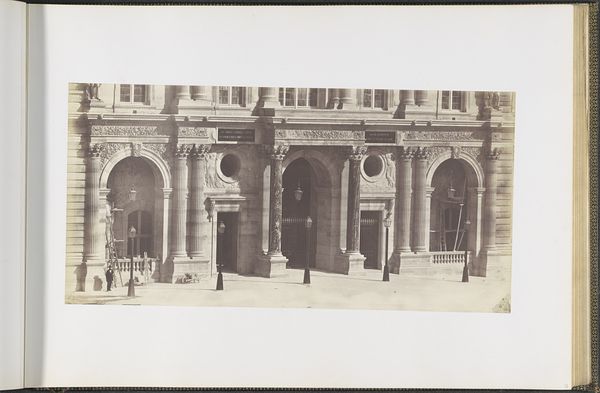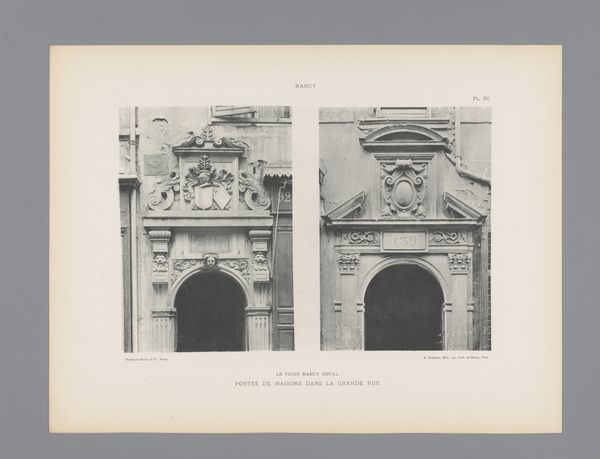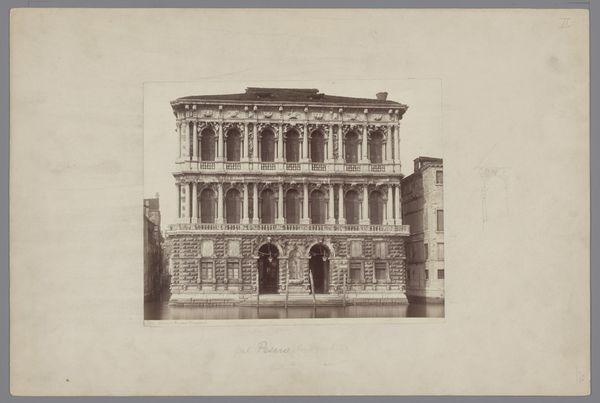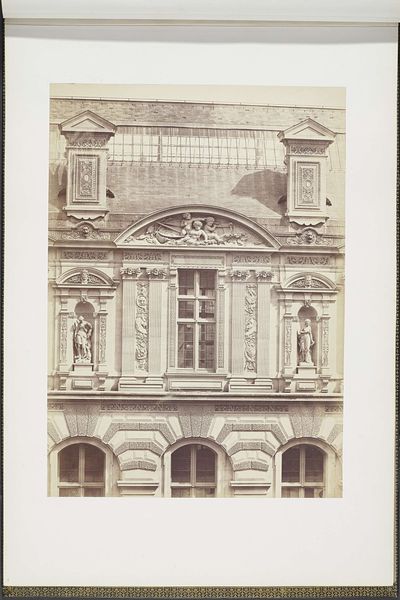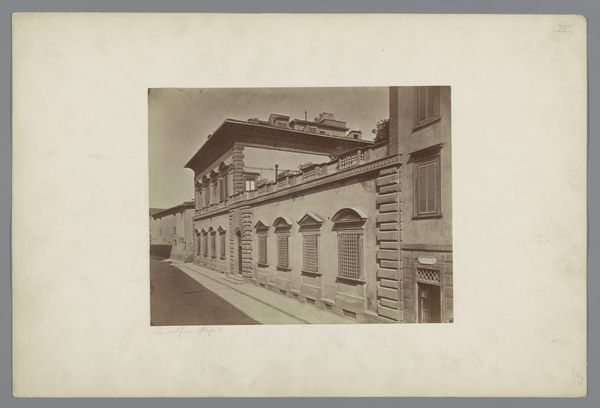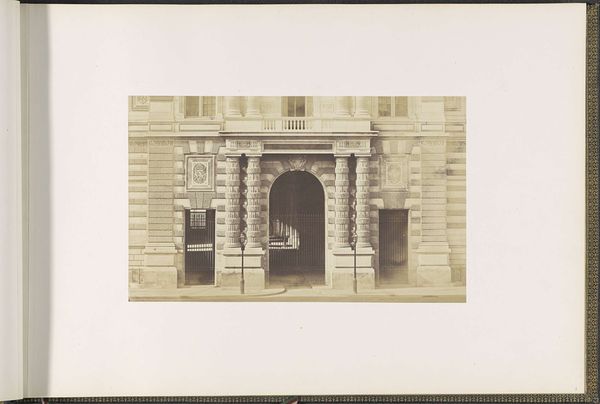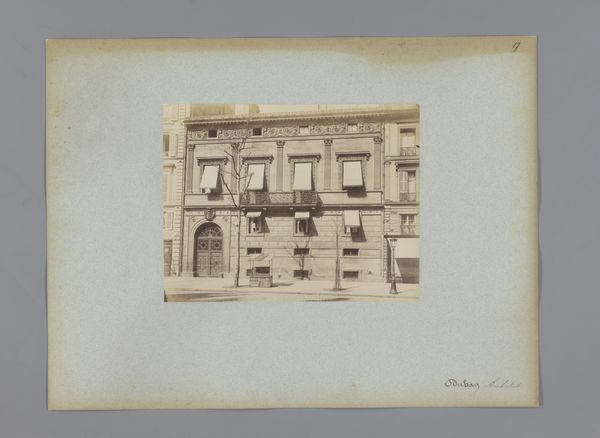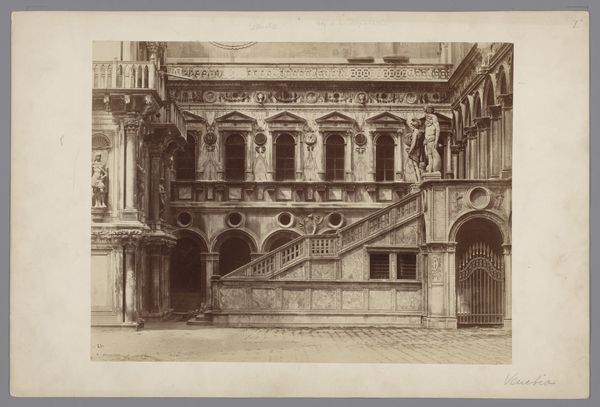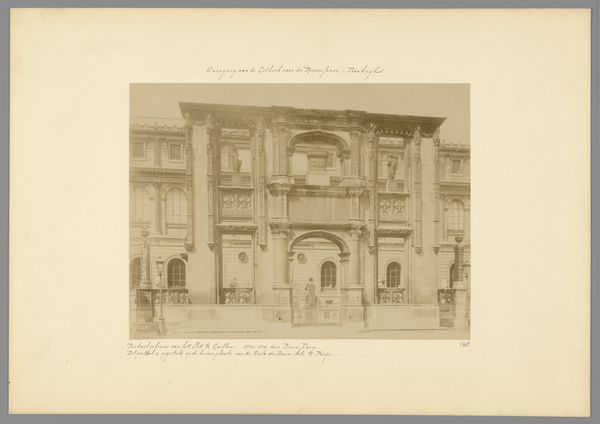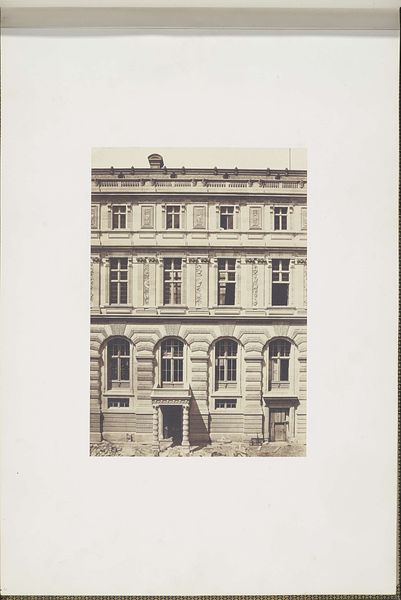
Begane grond van het Pavillon Turgot van het Palais du Louvre c. 1857
0:00
0:00
edouardbaldus
Rijksmuseum
print, photography, architecture
# print
#
photography
#
cityscape
#
architecture
#
realism
#
building
Dimensions: height 378 mm, width 556 mm
Copyright: Rijks Museum: Open Domain
Editor: Here we have Édouard Baldus’s photographic print, “Begane grond van het Pavillon Turgot van het Palais du Louvre,” circa 1857, housed in the Rijksmuseum. The sharp lines and ordered architectural facade lend the piece a sense of grandness. What elements of this photograph stand out to you? Curator: The rigid symmetry of the composition immediately draws the eye. The photograph’s organizing principle relies heavily on balance: the central archway, the flanking columns and circular reliefs, even the placement of the lampposts contribute to this. Notice the tonal gradations, how Baldus coaxes depth from the stone using light and shadow. The formal repetition suggests an immutable order. Editor: The precision in the capture, especially considering the period, is astounding. What effect do you think the high level of detail was intended to create? Curator: Detail, in this case, elevates the architecture. The ornamentation—the capitals of the columns, the moldings, the subtle carvings—are rendered with exceptional clarity. Consider how the linear arrangement emphasizes verticality and stability. This attention to architectural detail seems aimed at conveying not just realism, but a sense of permanence, of enduring power. Editor: It’s like a statement about the stability and prestige of the Louvre itself. Does the relative lack of human presence in the image contribute to that feeling, do you think? Curator: Precisely. By removing human elements, Baldus focuses our attention on the architectural form itself, thereby celebrating its enduring grandeur and solidity. It prompts one to think about the abstract form and not the human element. Editor: That’s given me a new way of looking at how the elements within an artwork communicate ideas, rather than simply depicting a scene. Thank you. Curator: A valuable lesson, indeed. There is more to learn with continued observations of form.
Comments
No comments
Be the first to comment and join the conversation on the ultimate creative platform.


